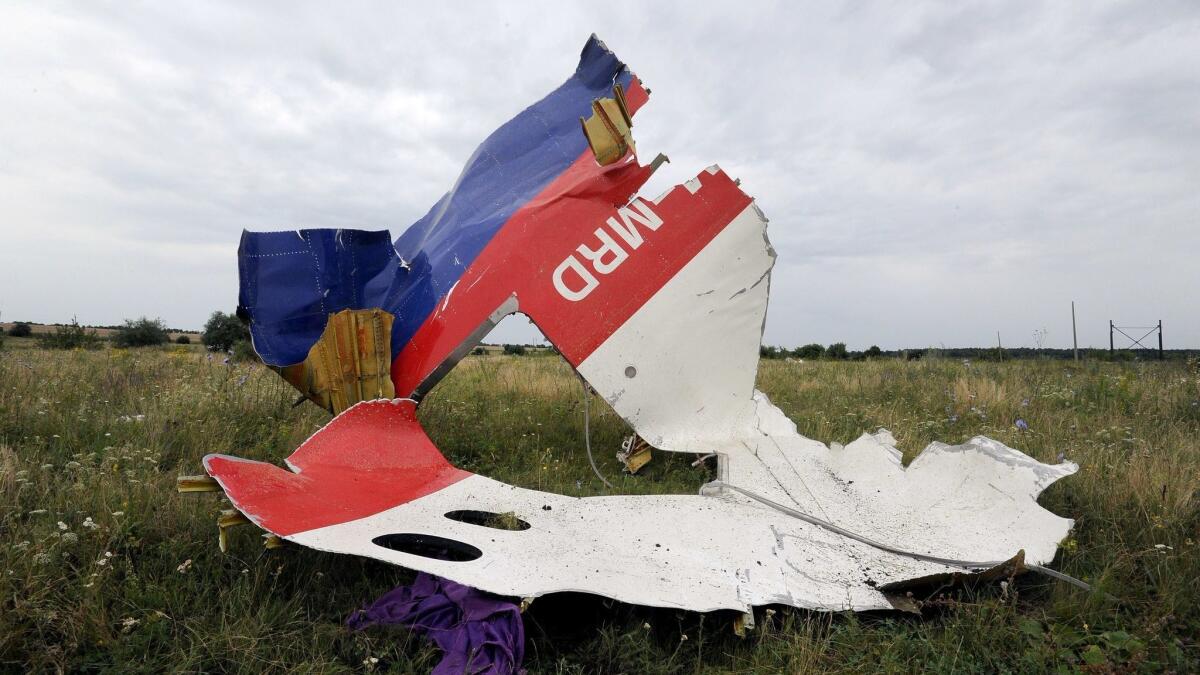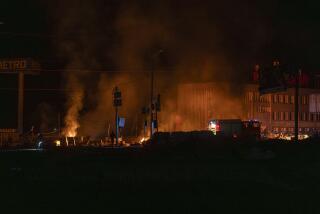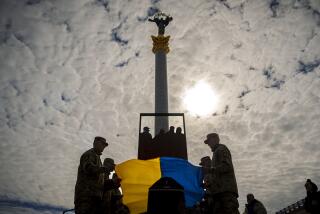Russian military missile downed Malaysia Airlines jet over Ukraine in 2014, investigators say

Detailed analysis of video and photos has unequivocally established that the Buk missile that brought down Malaysia Airlines Flight 17 over eastern Ukraine nearly four years ago came from a Russia-based military unit, an international team of investigators said Thursday.
It is the clearest link yet published by the team to the involvement of Russian military in the deadly missile strike.
Prosecutors said they have presented their findings to Moscow and are seeking answers, but so far have not received a response. The international team running the criminal investigation appealed for help from witnesses who can testify about the involvement of the Russian military’s 53rd anti-aircraft missile brigade based in the city of Kursk.
Prosecutor Fred Westerbeke said the conclusion raised new questions, “such as the question about how actively involved the brigade itself was in bringing down Flight MH17.”
Russia has always denied involvement in the downing of the jet.
Westerbeke said the Joint Investigation Team is not yet ready to name suspects, but added: “I can say that we are now entering the ... last phase of the investigation. When we will be ready, it is not possible to say at the moment, because there is still a lot of work to do.”
The Boeing 777 passenger jet was headed from Amsterdam to Kuala Lumpur, Malaysia, when it was blown out of the sky over eastern Ukraine on July 17, 2014. All 298 passengers and crew were killed.
Prosecutors said in 2016 that the plane was shot down by a Buk missile fired from territory controlled by Russia-backed rebels, using a mobile launcher trucked in from Russia and hastily returned there. Thursday’s presentation went a step further by identifying the exact unit allegedly involved and more details of the rocket, and showing a compilation of videos and photos from social media tracing the missile convoy’s journey.
Investigators also displayed parts of the engine casing and exhaust system recovered from Ukraine and showed photos of a unique serial number on the missile. Team members said careful analysis of video and photos from social media and analysis of parts of the rocket found at the crash scene traced its journey into Ukraine and had given them a “fingerprint” identifying the rocket and where it came from.
More to Read
Start your day right
Sign up for Essential California for news, features and recommendations from the L.A. Times and beyond in your inbox six days a week.
You may occasionally receive promotional content from the Los Angeles Times.






